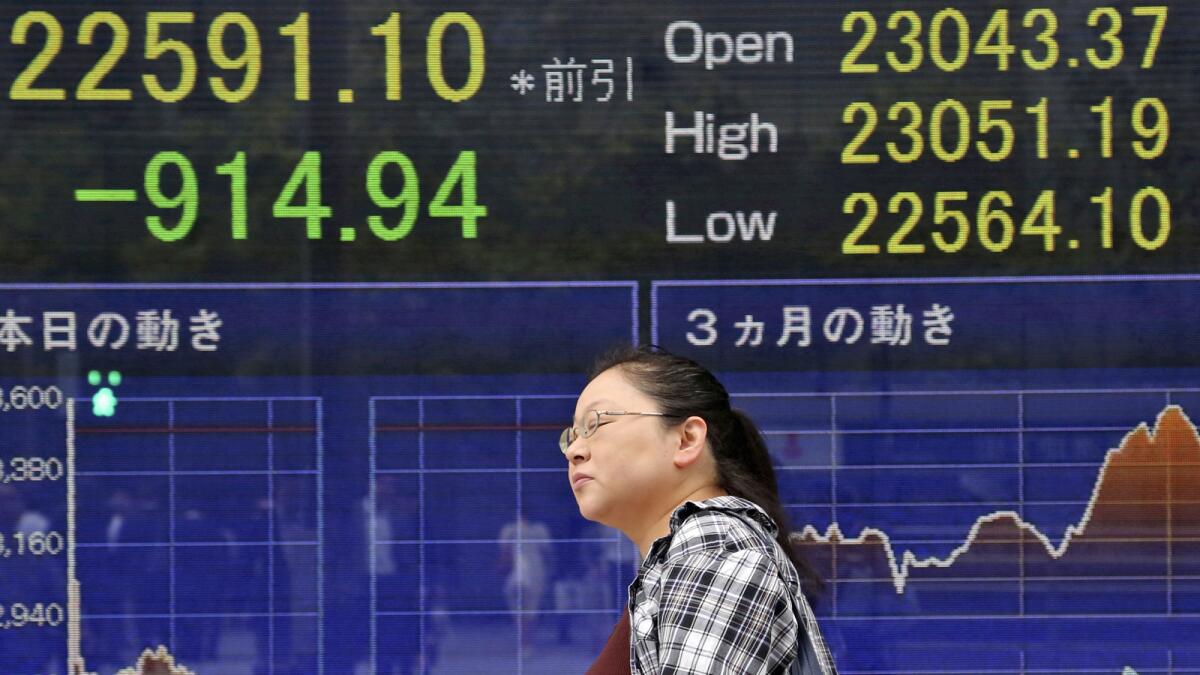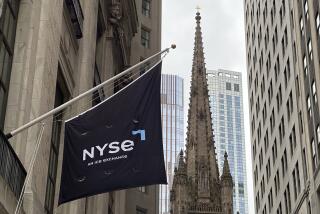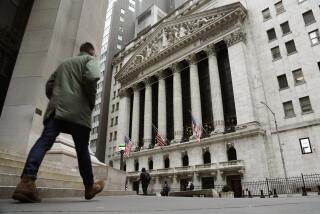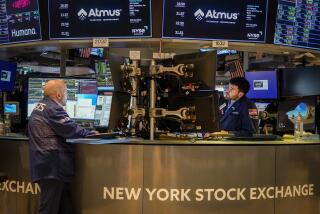U.S. stocks open modestly lower the day after their biggest drop since February

U.S. stock indexes opened lower Thursday, but it wasn’t with the steep drop feared overnight as Wall Street’s worst rout since February roiled global markets.
The Dow Jones industrial average was down about 125 points, or 0.5%, in the first minutes of trading. The Standard & Poor’s 500 index and the Nasdaq composite posted similar losses.
Weak inflation data provided a moment of respite overnight, sending the dollar lower and Treasuries higher.
S&P 500 futures fell as much as 1.2% overnight, but that drop was all but erased as investors speculated the Federal Reserve won’t be forced to speed up the pace of tightening. Higher interest rates make the short list of reasons for the spike in Treasury yields and concurrent equity sell-off in recent days.
Meanwhile, Wednesday’s rout spread around the world, with the worst of the losses in Asia. China’s Shanghai Composite gauge closed down more than 5% and Taiwan’s technology-heavy benchmark plummeted more than 6%. Europe’s main equity index fell to the lowest since early 2017. The euro and the pound both advanced.
Investors seeking to pinpoint the cause of the current rout in equities have no shortage of culprits: U.S companies are increasingly fretting the impact of the burgeoning trade war, while the same issue prompted the IMF to dial down global growth expectations. In the tech sector, which was a key driver of the rally that pushed American equities to a record just a month ago, expensive-looking companies have been roiled by a hacking scandal.
Against this backdrop, the Federal Reserve has been trimming its balance sheet and raising interest rates, provoking the ire of Trump and helping force a repricing of riskier assets.
“What you’re seeing right now is a bit of a panic — we wouldn’t say this looks like the end of the cycle,” said William Hobbs, head of investment strategy at Barclays Investment Solutions in London. “You’ve got to try to keep the skin in the game for as long as possible because it’s an incredibly profitable period of the cycle to be invested through if you can keep your nerve.”
Wider market contagion appeared contained. In currencies, the euro and pound rose while the dollar weakened versus most of its major counterparts. The Swedish krona was the standout gainer, jumping after inflation data. The lira and rand rallied, but emerging currencies overall were little changed.
UPDATES:
6:40 a.m.: This article was updated with the opening of U.S. markets.
6:25 a.m.: This article was updated with a Bloomberg article containing more recent data.
4:30 a.m.: This article was updated with data from European markets.
Oct. 11, 2:10 a.m.: This article was updated with more recent data from Asian markets.
This article was originally published on Oct. 10 at 10:15 p.m.
More to Read
Inside the business of entertainment
The Wide Shot brings you news, analysis and insights on everything from streaming wars to production — and what it all means for the future.
You may occasionally receive promotional content from the Los Angeles Times.






